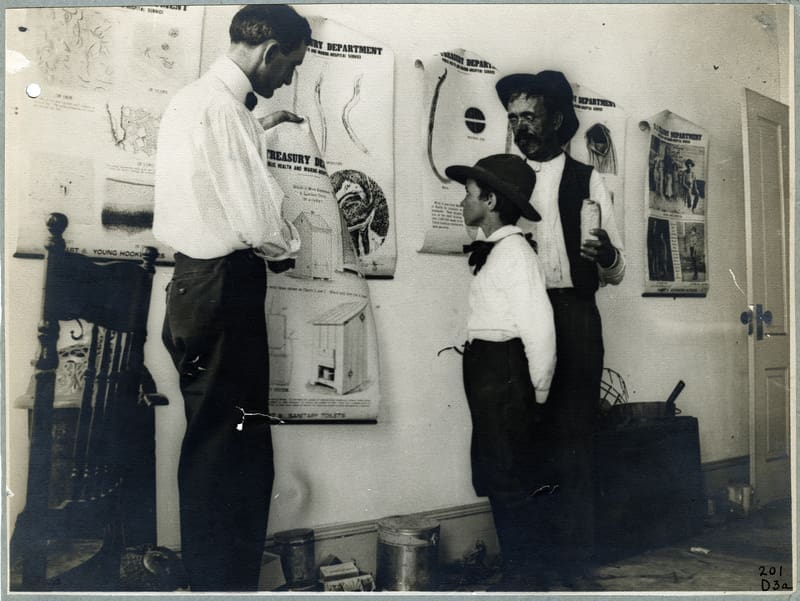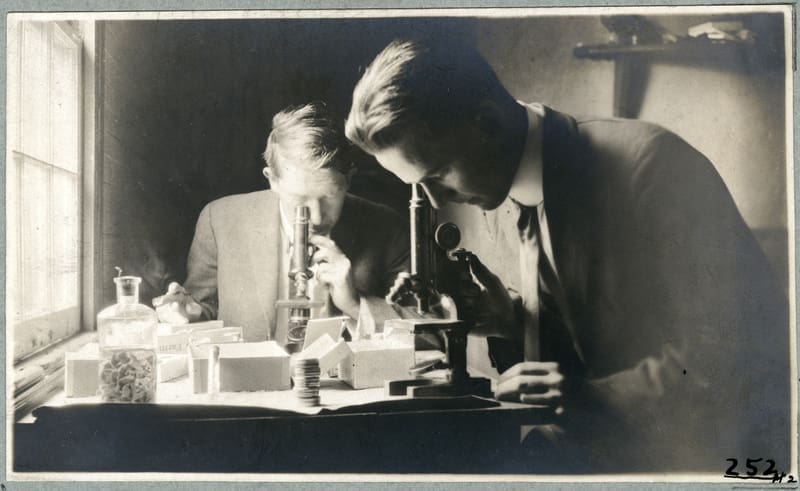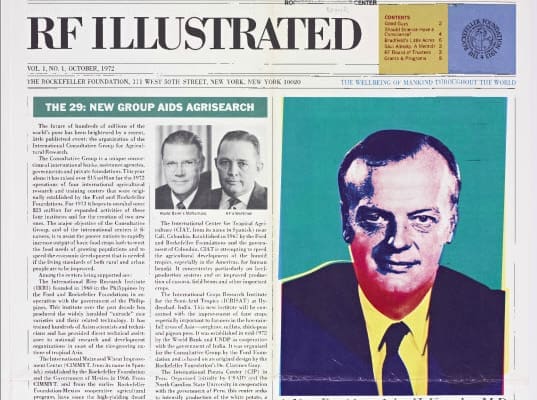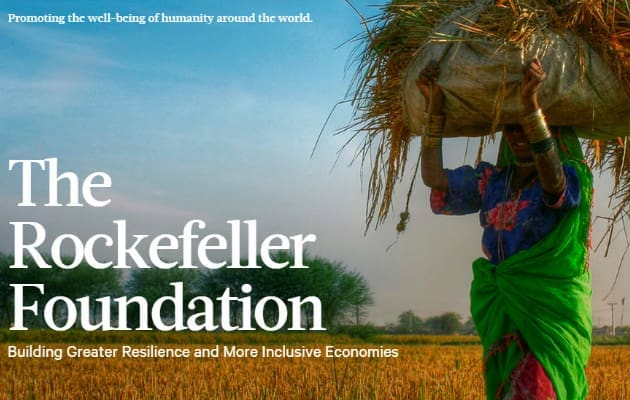Today marks The Rockefeller Foundation’s 102nd anniversary, a milestone that finds us hard at work toward the same mission that has inspired us since 1913: to promote the well-being of humanity around the world. Over the years, we’ve also stayed true to some core principles that make our work possible: building relationships with a wide range of actors in the public and private sectors, innovating against the world’s great challenges and opportunities, and building solutions that address the entrenched systems and root causes underlying our biggest problems.
But while our mission and principles haven’t changed, the world certainly has—perhaps never as rapidly as now, in these early years of the 21st century. And as the times have shifted, so have our approaches to some of the issues that interest us most.
Here are three areas of work that have captivated us for more than a century—and how we’ve tackled them, then and now.
Building Health Systems
Then: Eradication of Hookworm Disease (RSC)
In 1909, the Rockefeller Sanitary Commission for the Eradication of Hookworm Disease was created with the intention of eliminating the disease across the region. Among children, hookworm infection was often the culprit for missed class and poor performance. In many rural countries, infection rates were as high as 60 percent.
Southerners initially distrusted these early efforts, but commission staff innovated in their outreach, using demonstrations, illustrated lectures, and some of the very first movie public service announcements. Eventually, incidents of hookworm infection were greatly reduced, sparking the birth of public health institutions in many Southern states—and the beginning of the global public health field as we know it.
Now: Resilient Health Systems
From the recent earthquake in Nepal to the Ebola outbreak in West Africa, we have witnessed crises that shatter health systems and tear at the economic and social fabric of entire countries and regions. By shifting our focus from reacting and responding to planning and preparing, our investments will protect us in times of crisis, strengthen us in times of calm, and ensure gains in the health of all people, regardless of their socioeconomic status or wherever they may be.
Drawing on our decade of work building and promoting resilience around the world, The Rockefeller Foundation promotes resilient health systems that stitch these elements together into an interactive, dynamic organism in which the whole is more than the sum of its parts.
Integration for Innovation
Then: Molecular Biology
The high point of The Rockefeller Foundation program in the natural sciences was its initiative in molecular biology, which ran from 1933 to 1951. The initiative made an unprecedented and innovative contribution to the development of science, essentially recombining the relatively well-developed tools of physics and chemistry and applying them to the as-yet-unanswered questions of the life sciences.
Now: Pioneering Innovative Finance
Since the term ‘impact investing’ was coined at the Foundation’s Bellagio Center in 2007, we’ve seen fantastic strides in the field of innovative finance. From the launch of the world’s first social impact bond to an innovative approach to economic development through clean, rural electrification, we’ve helped integrate investors’ impulses to generate financial return and achieve social impact—and, along the way, push forward the movement to make today’s economy work for the world’s poorest and most vulnerable people.
Getting the Message Out
Then: RF Illustrated
The late 1960s and early 1970s were a trying time for the American public’s trust in the institutions that underpinned the nation—and institutional philanthropy was no exception. There was a widespread lack of information concerning foundations and their role in civic life, and this lack of understanding soon gave way to distrust. In order to make ourselves—and the broader world of American philanthropy—better known, The Rockefeller Foundation began to publish RF Illustrated, a full-color newsletter with the simple goal of “seeking to explain what we do, and why we do it.”
Now: A brand new website
After over a hundred years of experience promoting the well-being of humanity around the world, we have a wealth of knowledge that can be leveraged to influence every sector to help us achieve our mission. We also recognize digital media’s transformative power to find and accelerate new ideas and networks to solve some of the world’s greatest social problems. So we set out to reimagine the purpose of a philanthropy’s website—and ended up totally reinventing our own.
Those were some of my favorite reflections on the past and present. But I asked a few of my colleagues to share which innovations or ideas excite them most right now:
What’s the most innovative project or idea taking root in global development right now? #GlobalDev #Innovation
— Rockefeller Fdn (@RockefellerFdn) May 13, 2015
@RockefellerFdn building resilient health systems for universal health coverage #UHC will transform societies&countries around the world. — Robert Marten (@MartenRobert) May 13, 2015
@RockefellerFdn Social #Innovation Labs, which use emerging methods and rapid prototyping to solve complex problem http://t.co/lQOqvtMzbu
— Amira Bliss (@amizzle) May 14, 2015
@RockefellerFdn #sharedvalue. The private sector taking forward initiatives that are good for business and society will change the world. — Sarah Troup (@Sarahtroup) May 13, 2015
@RockefellerFdn Engaging masses via #mobile informs understanding of pblms & offers solutions http://t.co/sv7zanchZz pic.twitter.com/olcJU2kTWe
— Faizal Karmali (@faizalkarmali) May 13, 2015
@RockefellerFdn #Cities are reinventing their #transit systems to be more resilient and inclusive http://t.co/3Cefri60fW #BeyondTraffic — Ryan Whalen (@ryanmwhalen) May 14, 2015
@RockefellerFdn investing in #resilience before disaster strikes, and preserving #EcosystemServices that sustain our planet & well-being.
— Cristina Rumbaitis (@cristina_rdr) May 12, 2015






Leave a comment